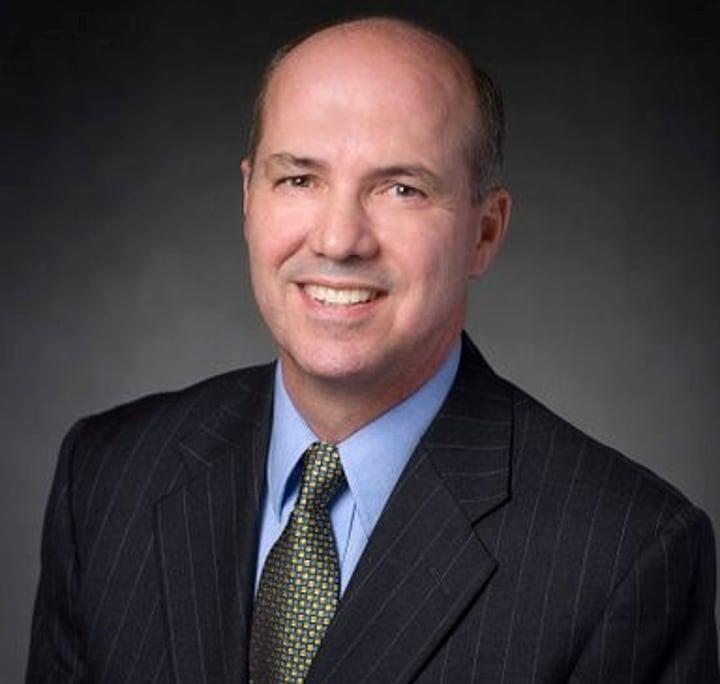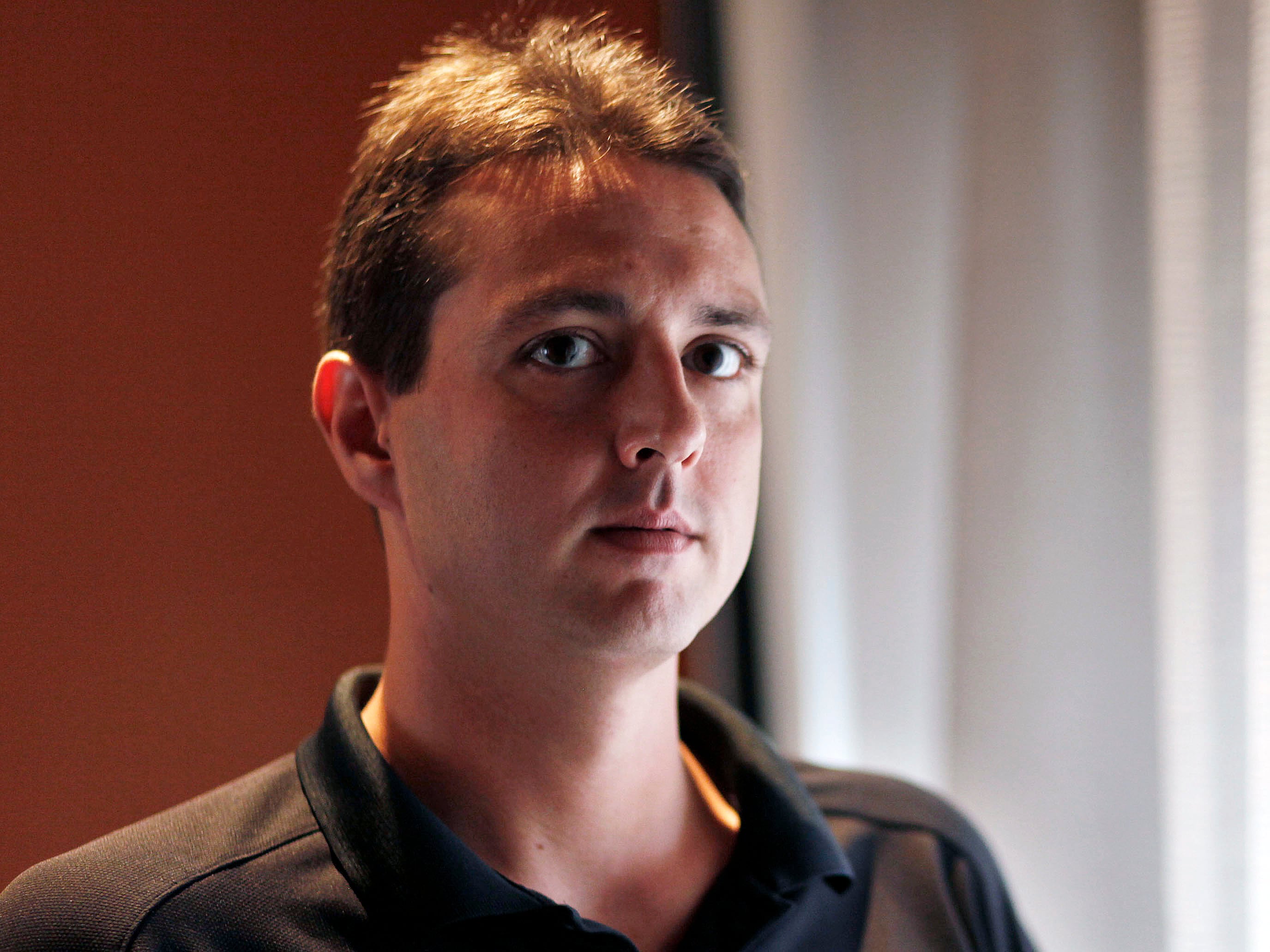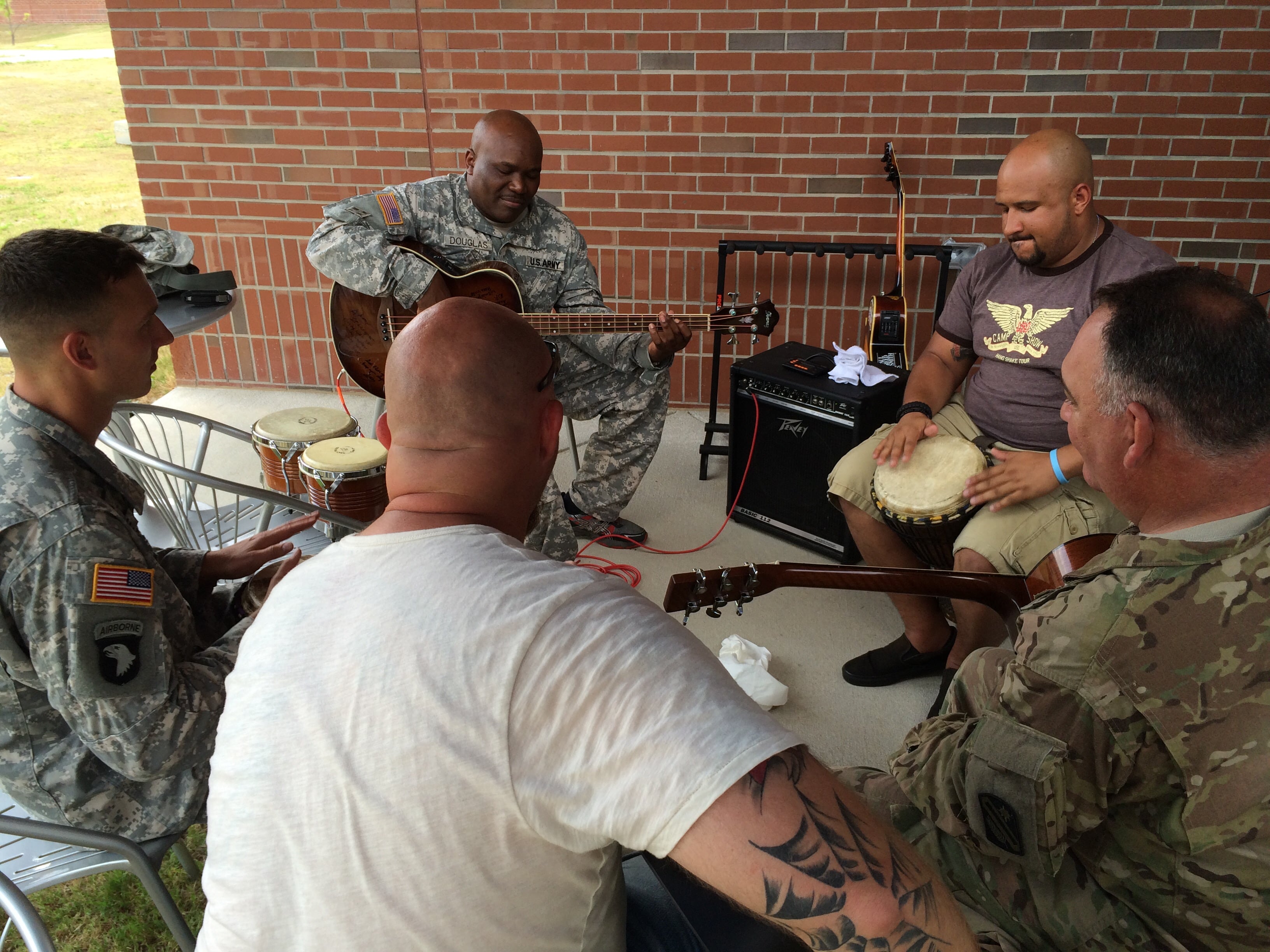As Wounded Warrior Project battles allegations its former executives violated public trust, they face the real fear that donations will start to dry up.
Tracy Keil worries that will leave her family with more than $50,000 a month in healthcare expenses.
Her husband, Matt, is an Army veteran who requires 24-hour assistance ever since an Iraqi insurgent's bullet left him a quadriplegic. The couple lives in Colorado with their five-year-old twins — and a massive in-home care bill that's covered by the WWP's Independence Program.
"Veterans Affairs covered some costs, but it wasn't really enough," Tracy Keil said. "Now, he can go out. He can do things with the kids. My family is better. There is more smiling in our house.
"I don't care if Wounded Warrior Project got a 'C' rating from some charity organization. I care how my husband is going to live through another day."
That "C" rating refers to ongoing criticism from outside watchdog groups that have charged a high percentage of the charity's donations go to internal expenses, not to helping veterans. And much of the country does care about that.
The organization's once-stellar reputation is under attack, threatening to undermine the legitimate assistance it provides for tens of thousands of families like the Keils. Every year, the Florida-based WWP spends hundreds of millions of dollars to ensure combat wounded service members have access to cutting-edge prosthetics, innovative rehabilitation programs, supplemental financial support and dozens of other services that federal agencies can't provide.
But its the dollars not getting to veterans that are causing the problems. In March, CBS News released a three-part series detailing reckless spending accusations made by several ex-WWP employees, including exorbitant staff salaries, lavish corporate retreats and hefty bar tabs. The Daily Beast highlighted whistleblower complaints accusing WWP leadership of selling donors’ personal information to turn bigger profits while paying for first-class travel and office snacks. A New York Times report said the group spent thousands more on lawsuits and public relations moves to cover up those allegations.
WWP officials have denied all of the charges, saying they're both the result of bookkeeping mistakes made the outside watchdogs and disgruntled former employees looking to settle scores.
But families who spoke to Military Times said that even small cuts in programming funds could have disastrous consequences for them. Many recipients rely on the charity and Veterans Affairs benefits as their only sources of income and support.
"Overall, I've seen them do more good than anything else," said Paul Delacerda, an 82nd Airborne soldier who suffered traumatic brain injury after a roadside blast in Iraq in 2005. "I've been in their programs. They save lives."
ONGOING DRAMA
Much of the criticism originates with Charity Navigator, the nation's largest non-profit watchdog. Over the last two years, officials there have criticized WWP for spending only about 60 cents of every dollar raised on programs that directly benefit veterans. But WWP officials have disputed that calculation, saying the figure is closer to 81 cents (in line with most charities).
At issue is how certain fundraising and program overhead expenses are classified. WWP and some other non-profits have argued that's part of the cost and benefit of services to veterans. Charity Navigator and others don't, and count it as donations shifted away from would-be recipients.
WWP was founded in 2003 to help get CDs and free clothing to troops serving overseas and injured veterans recovering stateside. Officials note it's still a young organization compared to many other well-known veterans groups like the American Legion and Veterans of Foreign Wars, but it has also seen dramatic growth in the last 13 years.
Fundraising jumped from $74 million in fiscal 2011 to a projected $372 million in fiscal 2016. Group officials said programming has moved even quicker, with the number of veterans WWP serves increasing from about 8,000 to more than 144,000 in five years.
In March, the group's board released audit results showing what it called inaccuracies in the media reports. "The organization's commitment to injured service members, their caregivers and family members remains steadfast," officials said at the time.
But they paired that release with another announcing the dismissal WWP's two top executives, Chief Executive Officer Steve Nardizzi and Chief Operating Officer Al Giordano. The only reasoning given by the board was that the organization "would benefit from new leadership."
But the move panicked beneficiaries and sparked rumors that donors were beginning to turn away from the charity. On May 2, WWP Chief Program Officer Adam Silva suddenly resigned, adding more concerns.
Group officials have worked to calm those fears, though WWP's interim Chief Operating Officer Charlie Fletcher acknowledged that at least one major donor has delayed contributions to the group until internal reviews are complete.

Retired Army Maj. Gen. Charlie Fletcher, Interim Chief Operating Officer at Wounded Warrior Project.
Photo Credit: Courtesy of WWP
Those audits are looking not just for instances of staff mishandling funds but also to ensure the organization is operating as efficiently as possible.
"Part of this is to ensure there is absolutely no question about any criminal action that happened," Fletcher told Military Times. "...But more importantly, we've got to ensure the trust and confidence of the American people. We have to have a continuous process in which they know a dollar to the Wounded Warrior Project will put the maximum benefit to wounded warriors."
DAMAGE CONTROL
Fletcher's interview is among only a handful of media outreach efforts since the scandal earlier this year. While most of the group's damage control has happened behind the scenes, the group's strongest public advocate has been Nardizzi, who spent eight years running Wounded Warrior Project before his abrupt dismissal.
"If a warrior is reaching out to get help, there is no better place for them to get help than Wounded Warrior Project," he said. "My personal situation is irrelevant. ... And I'd refer donors there too. If you are a donor, and you really want to make an impact in a wounded warrior's life, there's no better place you could put your dollar."
Part of his motivation is protecting what he helped build. That success includes high-profile corporate partnerships with the NFL, Bank of America and Under Armor, and the steady spread of the group's well-known logo onto a variety of prominent events and venues.

Steve Nardizzi, former CEO of Wounded Warrior Project, shown here in a 2009 file photo.
Photo Credit: Pablo Martinez Monsivais/AP
Over the last five years, the group's finances have grown by an annual average of about 27 percent. Nardizzi said that capital has allowed the group to massively expand its reach, not only providing direct aid to veterans and caregivers but also launching initiatives like the WWP long-term trust.
Two years ago, the group set aside about $20 million in the program to ensure the long-term financial support of roughly 40 families. The program is designed to ensure the means for severely wounded veterans to live independently, regardless of the charity's future.
The outlay of such a massive amount of cash for a small number of families drew questions from other veterans organizations, as did Nardizzi's salary, which topped $470,000. Former employees told the Daily Beast that donations were also "wasted" on internal team building and comfort items, like candy and happy hours.
But Nardizzi says critics' complaints fit into a narrow interpretation of how charities should operate.
"We tend to like our charities small, we like to think of charities as all volunteer initiatives," he said. "If you operate at a small scale, you can do that. ... But what people don't understand is that when you're trying to solve really complex issues, you need professional staff. You can't just dabble in mental health care or long-term rehabilitation. Not everyone understands the investments that need to be made to get out in front of a need, or to scale this quickly."
Private corporations don't face the same criticism for investing in staff training or paying higher salaries for better talent, Nardizzi argued. He wants to see the group evaluated based on what it delivers to veterans, not solely the costs of doing that work.
Today, WWP alone accounts for about 12 percent of all veterans charity spending in America. That's a sizable sum that can't be replaced by a patchwork of small, volunteer groups, Nardizzi warns.
'SOMETHING YOU CAN'T PUT A VALUE ON'
Most families connected to the group don't see that internal structure and strife. What they do see is a direct benefit in their lives. Delacerda has been involved with WWP since shortly after his injury in 2005. The charity not only helped him get the care and advanced rehabilitation VA hospitals didn't offer, but also helped bankroll his band.
His all-wounded-troops ensemble, Vetted, plays a host of military bases and hospitals (and was just announced as a entertainment headliner at the 2016 Invictus Games). While heavily sponsored now, the venture would not have survived its first few years without significant financial support from WWP.
"They were there when no one else was," Delacerda said. "My band and me would not be where we are today if not for them."
The soldier-turned-drummer isn't sure what to make of these allegations. He saw the March firings of Nardizzi and Giordano as scapegoating more than solving problems.
But he's also less concerned with those issues than what he has seen from his direct contact with the group.
"Their reach is far, their network is huge," he said. "If they start to take that apart, it's going to hurt a lot of veterans. And not just members of Wounded Warrior Project."
The charity has become a major funding pipeline for a number of smaller veterans charities in recent years. In fiscal 2015, it handed out about $11 million in support to other groups, not including a $21.4 million investment in their new Warrior Care Network Hospitals project.

Members of the all wounded warrior band Vetted play music with active-duty troops at Fort Bragg in North Carolina during a tour stop in April.
Photo Credit: Courtesy of Paul Delacerda
Greg Galeazzi, a former Army captain who lost both legs in a roadside bomb blast in Afghanistan six years ago, said his recovery has been helped tremendously not just by WWP programs but that network of other veterans groups as well.
"I'm worried that whole safety net isn't going to be there anymore," the 30-year-old veteran said. "I've got a standing offer from them to help with advanced prosthetics training, whenever I'm ready they'll cover the costs. You don't know what it's like to have that kind of safety net and cushion if you need it."
Galeazzi said the group has also helped him with morale-building support too, including tickets to New England Patriots games and connections to music specialists who helped him start playing guitar again despite his heavily-injured arm.
"Those are things that people may see the costs, but it's something you really can't put a value on," he said. "Most people can't see my experiences and what the group has meant. But they can see a two-minute news report that shits on the whole organization."
WHAT'S NEXT: MORE UNCERTAINTY
Fletcher said he doesn't want families to worry. The retired Army major general said most of the first three weeks of his work with WWP has been spent calming families, employees, and donors about the organization's future. Yes, there will be reorganization and changes, he tells them. No, it won't mean the end of the charity.
"We're doing a real review now of investment and return," he said. "If we're not getting the sorts of return in a particular program that we're seeing elsewhere ... then we have to be critical of ourselves to move into new programs. ... But there is nothing in our DNA that says we will ever forsake an individual or a group."
Fletcher said that program operations are continuing on pace. He downplayed concerns about the scandal's long-term effect on donations. And the group is still focused on getting out its message that the organization has not abused its funding, but is working to find ways to more efficiently spend that money.
Nardizzi worries that could means a leaner, smaller WWP in years to come, not the aggressive organization he helped build. "By the end of 2017, we could be looking at an organization that has half the fundraising and is half the size," he said. "And that means fewer veterans being helped."
Fletcher said the group is also looking at building better connections within the veterans community, trying to maximize resources with other partners who can better deliver certain services or treatments. That could mean fewer WWP offerings but more veterans receiving help.
"At the end of the day, we just want to be part of the solution," he said. "We don't want to be on an island."
Tracy Keil says her family would be almost completely alone if not for the WWP assistance they receive. She doesn't know what to expect from the reorganization, or what to think of the allegations against the company. But she knows they're a critical lifeline.
She and all of the other families interviewed for this report said they continue to recommend the charity to fellow wounded veterans looking for help.
"I wish I could show [Americans] that their $10 donation is going to a family like mine," she said. "Some of this might look bad on paper, but come to my house. Watch my husband pull the kids around on a sled because he has help from WWP to do that. No other group can do that for us.
"I wish I had half a million to pay them for these services. But we don't."
Leo Shane III covers Congress, Veterans Affairs and the White House for Military Times. He can be reached at lshane@militarytimes.com.
Leo covers Congress, Veterans Affairs and the White House for Military Times. He has covered Washington, D.C. since 2004, focusing on military personnel and veterans policies. His work has earned numerous honors, including a 2009 Polk award, a 2010 National Headliner Award, the IAVA Leadership in Journalism award and the VFW News Media award.




